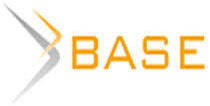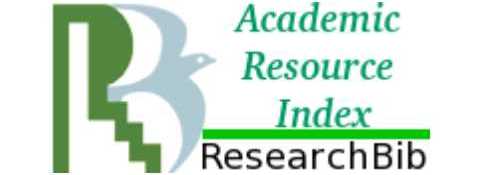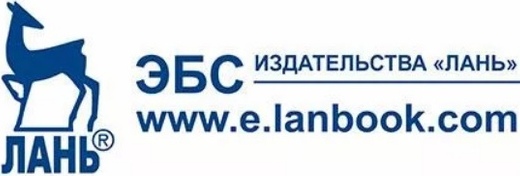National competitiveness: essence and methodical approaches to its assessment (the case of China, India and Russia)
In the context of the formation of a multipolar world, the problem of assessing and ensuring national competitiveness is of particular importance for China, India and Russia. Existing methods for assessing national competitiveness are based mostly on the indices of the World Economic Forum and the Institute of Management, which are overly politicized and opaque. In this regard, approaches to defining national competitiveness were identified and systematized, methodological approaches to its assessment were investigated and systematized, which made it possible to develop the author’s index for assessing current national competitiveness. The indicators underlying the index do not depend on the results of surveys and, accordingly, are as reliable and transparent as possible. When calculating the index, data from international organizations are used. The developed national competitiveness index was calculated for the period 2010-2022 for China, India and Russia. The highest values were demonstrated by the current competitiveness index of China, which, like India, was characterized by annual growth in all indicators. Russia was second, but a slowdown in all indicators posed a threat. Russia's competitive advantage is national welfare, which is the ultimate goal of achieving national competitiveness. In order to further increase this indicator in Russia, as well as ensure national competitiveness in general, high productivity should be maintained and the production of high-tech products should be stimulated.
Saprikina, N. A. (2024), “National competitiveness: essence and methodical approaches to its assessment (the case of China, India and Russia)”, Research Result. Business and Service Technologies, 10 (2), pp. 160-174. DOI: 10.18413/2408-9346-2024-10-2-1-3
















While nobody left any comments to this publication.
You can be first.
Adamkiewicz, H. G. (2019), “The dimensions of national competitiveness: the empirical analysis based on the World Economic Forum’s data”, Economics and Business Review 5 (3), pp. 92-117, [Online], available at: https://intapi.sciendo.com/pdf/10.18559/ebr.2019.3.6 (Accessed 02 April 2024).
Arslan, N. and Tatlidil, H. (2012), “Defining and measuring competitiveness: a comparative analysis of Turkey with 11 potential rivals”, International Journal of Basic & Applied Sciences, 12 (2), pp. 31-43.
Carayannis, E.G. and Grigoroudis, E. (2015), “Using multiobjective mathematical programming to link national competitiveness, productivity, and innovation”, Annals of Operations Research, 247 (2), pp. 635-655, [Online] available at: https://link.springer.com/article/10.1007/s10479-015-1873-x (Accessed 02 April 2024).
Cho, D.-S. and Moon, H.-C. (2005), “National Competitiveness: Implications for Different Groups and Strategies”, International Journal of Global Business and Competitiveness, 1 (1), pp. 1-11, [Online] available at: https://www.researchgate.net/publication/242577908_National_Competitiveness_Implications_for_Different_Groups_and_Strategies (Accessed 02 April 2024).
Fyliuk, H., Honchar, I. and Kolosha, V. (2019), “The interrelation between economic growth and national economic competitiveness: the case of Ukraine”, Journal of Competitiveness, 11 (3), pp. 53–69, [Online] available at: https://www.cjournal.cz/files/335.pdf (Accessed 02 April 2024).
Grupe, C. and Rose, A. (2010), “China, India, and the socioeconomic determinants of their competitiveness”, Economics Research International, 2010, pp. 1-15, [Online] available at: https://www.hindawi.com/journals/ecri/2010/860425/ (Accessed 02 April 2024).
Korauš, A., Mazák, M. and Dobrovič, J. (2018), “Quantitative analysis of the competitiveness of Benelux countries”, Entrepreneurship and Sustainability Issues, 5 (4), pp. 1069-1083, [Online] available at: https://jssidoi.org/jesi/uploads/articles/20/Koraus_Quantitative_analysis_of_the_competitiveness_of_Benelux_countries.pdf (Accessed 02 April 2024).
Medeiros, V., Godoi, L. G. and Teixeira, E. C. (2019), “Competitiveness and its determinants: a systemic analysis for developing countries”, CEPAL review, 129, pp. 7-25, [Online] available at: https://repositorio.cepal.org/server/api/core/bitstreams/9d3e2709-5d9b-4530-ab49-7cafff358f01/content (Accessed 02 April 2024).
Rungsrisawat, S. (2019), “National Competitiveness: Alternative Methodologies of Evaluation and Contemporary Conditions for Growth (Russian Federation Case Study)”, International science and technology conference “Earth science”, Russky Island, Russian Federation, 4–6 March 2019, pp. 1-9, [Online] available at: https://iopscience.iop.org/article/10.1088/1755-1315/272/3/032117/pdf (Accessed 02 April 2024).
Rusu, V.D. and Roman, A. (2018), “An empirical analysis of factors affecting competitiveness of C.E.E. countries”, Economic Research-Ekonomska Istraživanja, 31 (1), pp. 2044-2059, [Online] available at: https://hrcak.srce.hr/file/322726 (Accessed 02 April 2024).
Saprikina, N.A. (2020), “Identification technique of the world economy growth poles while transition to a multipolar world”, Moscow Economic Journal, 5, pp. 281-295 [Online] available at: https://cyberleninka.ru/article/n/metodika-vyyavleniya-stran-polyusov-rosta-mirovoy-ekonomiki-v-usloviyah-formirovaniya-mnogopolyarnogo-mira (Accessed 05 March 2024), In Russian.
Saprikina, N.A. (2021), “Methodological approach to the identification of the world economy growth poles and strategic triangles formed by them while transition towards multipolarity”, Moscow economic journal, 8, pp. 263-282 [Online] available at: https://cyberleninka.ru/article/n/metodicheskie-podhody-k-vyyavleniyu-stran-polyusov-rosta-mirovoy-ekonomiki-i-obrazuemyh-imi-strategicheskih-treugolnikov-v (Accessed 05 March 2024), In Russian.
Sigue, M. (2020), “The determinants of global competitiveness of economy: a dynamic panel approach applied to the WAEMU countries”, Applied Finance and Accounting, 6 (2), pp. 16-27, [Online] available at: https://www.researchgate.net/publication/343451637_The_Determinants_of_Global_Competitiveness_of_Economy_A_Dynamic_Panel_Approach_Applied_to_the_WAEMU_Countries (Accessed 02 April 2024).
Simionescu, M., Pelinescu, E., Khouri, S. and Bilan, S. (2021), “The main drivers of competitiveness in the EU-28 countries”, Journal of Competitiveness, 13 (1), pp. 129–145, [Online] available at: https://www.cjournal.cz/files/399.pdf (Accessed 02 April 2024).
Stevans, L. K., Neelankavil, J. P., Mendoza, R. and Shankar, S. (2012), “The economic competitiveness of countries: a principal factors approach”, International Journal of Economics and Finance, 4 (12), pp. 76-90, [Online] available at: https://ccsenet.org/journal/index.php/ijef/article/view/21720 (Accessed 02.04.2024).
United Nations Development Program (2010-2022), Human Development Reports, [Online] available at: https://hdr.undp.org/data-center/human-development-index#/indicies/HDI (Accessed 15 April 2024).
World Bank (2010-2022), DataBank [Online], available at: https://databank.worldbank.org/home.aspx (Accessed 15.04.2024).
World Trade Organization (2010-2022). Data [Online], available at: https://timeseries.wto.org/ (Accessed 15 April 2024).
Wu, W. Y., Li, C. Y., Othman, M. N., Sim, O. F., Ibrahim, A. R., Ghazali, E. (2004), “An Integrative Measurement Model of National Competitiveness: The Perspective for Malaysia”, Asia Pacific Management Review, 9 (2), pp. 285-300, [Online] available at: https://www.researchgate.net/publication/290162819_An_integrative_measurement_model_of_national_competitiveness_the_perspective_for_Malaysia (Accessed 02 April 2024).
Wu, W. Y., Li, C. Y., Wang, H. C., Nouansavanh, K. and Chanhming, M. P. (2004), “An integration of approaches for the evaluation of national competitiveness: a survey of Laos”, Asia Pacific Management Review, 9 (1), pp. 247-262, [Online] available at: https://www.researchgate.net/publication/265188821_An_Integration_of_Approaches_for_the_Evaluation_of_National_Competitiveness_A_Survey_of_Laos (Accessed 02 April 2024).